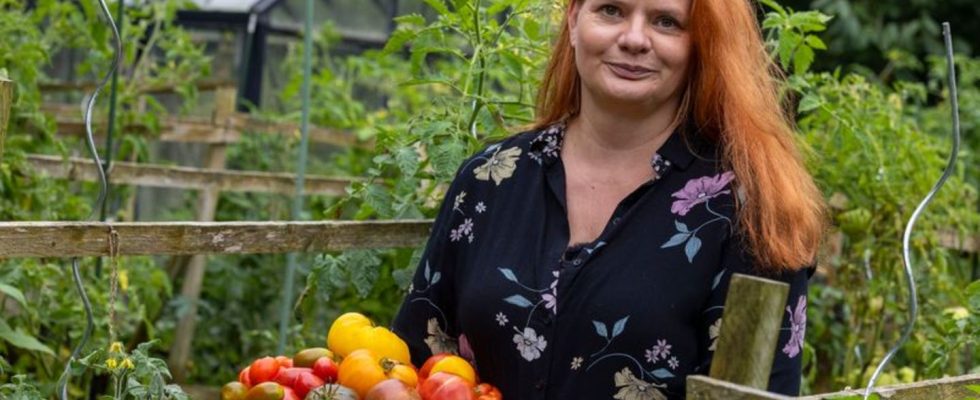Vegetables
How a gardener wants to save the variety of tomatoes
Well over 100 different tomato varieties grow in Birgit Arndt’s garden. photo
© Christoph Reichwein/dpa
Her fruits have little in common with supermarket tomatoes: Birgit Arndt grows rare tomato varieties in her garden. Your commitment to seed diversity hits a nerve.
They are called “Dreikäsehoch” or “Queen of the Night”, come from Siberia or Peru and bear fruits that are as tiny as marbles or as gigantic as balls: around 100 types of tomatoes grow in Birgit Arndt’s garden on the outskirts of Hamm, hardly any of which are different equals.
The ones who are now carrying heavily in August represent Plant only part of the great treasure that Arndt has amassed: her seed archive includes almost 1100 varieties. With her effort to preserve old and rare varieties, she is part of a growing movement that wants to preserve the original diversity of crops.
Some weigh up to a kilo
When Arndt roams through her man-high tomato forest, she gets enthusiastic: “Some can weigh up to a kilo,” she says, presenting some magnificent specimens. It shows tomatoes with hairy skin like a peach and a knobbly variant, the so-called travel tomato, from which bite-sized pieces can be broken off. “It’s a variety that I can’t find in the supermarket. I’m limited to ten varieties when it comes up. And they all taste pretty much the same.”
Varieties that do not meet the standards of industry and trade also get a chance in Arndt’s garden. For example, you would probably never find her favorite variety “Snow White” in a supermarket, she says. “She likes to burst open because she has such thin skin.” It is therefore not transportable or storable – but tastes intensely sweet and spicy at the same time.
Supermarket tomatoes need to have a longer shelf life
For the trade, as Arndt explains, the fruits have to be uniform and have a firm skin – this is important for transport and processing. “Nowadays, I can put a supermarket tomato anywhere for up to three weeks without any problems, one of the old varieties breaks after three to seven days.”
In addition, so-called F1 hybrids are now dominating the seed market for vegetables: high-yield seeds, but whose yields are already declining in the second generation. The umbrella organization for the diversity of crops and useful plants calls this “one-way seed”. A handful of corporations market most of the world’s seeds.
More and more people are taking part
But there is a counter-movement: More and more people are getting involved in seed conservation networks or in their own gardens to save endangered fruit, grain or vegetable varieties, says Susanne Gura from the board of directors of the umbrella organization. Motivation is social, political or ecological reasons.
The monocultures of the agricultural industry, the immense use of pesticides, depleted soil: Anyone who wants to push back these developments in modern agriculture needs the full variety of old varieties, says Gura. “They are a huge fund to continue breeding with.” Private commitment forms an important foundation for this.
“The varieties are threatened with extinction and someone has to do it. We’ll just do it,” says Arndt. Not only the Arndts themselves are enthusiastic about the quality of old varieties, but also the buyers of the seeds they have grown. “We often get letters that the tomatoes finally taste like they used to from childhood.”

